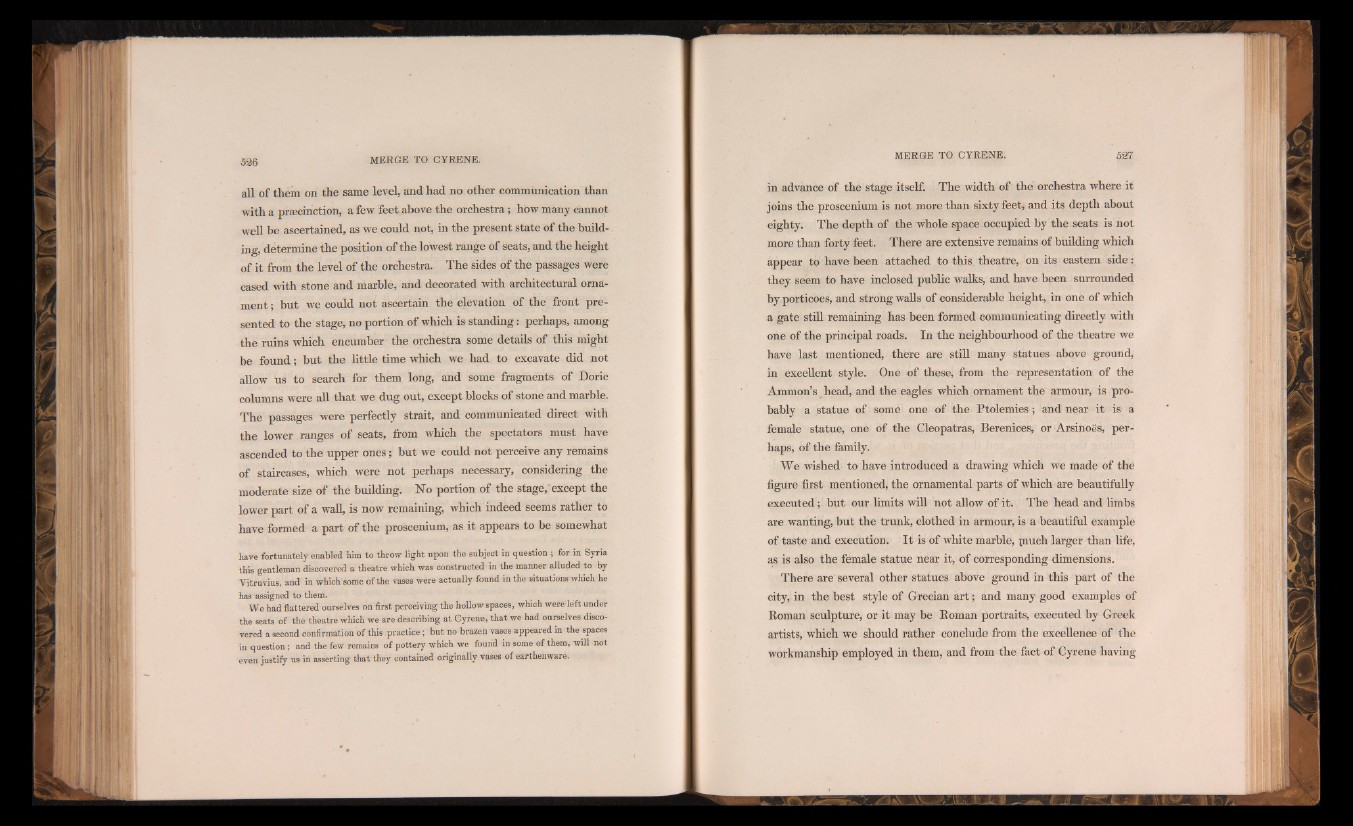
all of them on the same level, and had no other communication than
with a pr£ecinetion, a few feet above the orchestra; how many cannot
well be ascertained, as we could not, in the present state of the building,
determine the position of the lowest range of seats, and the height
of it from the level of the orchestra. The sides of the passages were
cased with stone and marble, and decorated with architectural ornament
; but we could not ascertain the elevation of the front presented
to the stage, no portion of which is standing: perhaps, among
the ruins which encumber the orchestra some details of this might
be found; but the little time which we had to excavate did not
allow us to search for them long, and some fragments of Doric
columns were all that we dug out, except blocks of stone and marble.
The passages were perfectly strait, and communicated direct with
the lower ranges of seats, from which the spectators must have
ascended to the upper ones; but we could not perceive any remains
of staircases, which were not perhaps necessary, considering the
moderate size of the building. No portion of the stage,'except the
lower part of a wall, is now remaining, which indeed seems rather to
have formed a part of the proscenium, as it appears to be somewhat
have fortunately enabled him to throw light upon the subject in question ; for in Syria
this gentleman discovered a theatre which was constructed in the manner alluded to by
Vitruvius, and in which some of the vases were actually found in the situations which he
has assigned to them.
We had flattered ourselves on first perceiving the hollow spaces, which were left under
the seats of the theatre which we are describing at Cyrene, that we had ourselves disco-
vered a second confirmation of this practice; but no brazen vases appeared in the spaces
in question; and the few remains of pottery which we found in some of them, will not
even justify us in asserting that they contained originally vases of earthenware.
in advance of the stage itself. The width of the orchestra where it
joins the proscenium is not more than sixty feet, and its depth about
eighty. The depth of the whole space occupied by the seats is not
more than forty feet. There are extensive remains of building which
appear to have been attached to this, theatre, on its eastern side :
they seem to have inclosed public walks, and have been surrounded
by porticoes, and strong walls of considerable height, in one of which
a gate still remaining has been formed communicating directly with
one of the principal roads. In the neighbourhood of the theatre we
have last mentioned, there are still many statues above ground,
in excellent style. One of these, from the representation of the
Ammon’s head, and the eagles which ornament the armour, is probably
a statue of some one of the Ptolemies; and near it is a
female statue, one of the Cleopatras, Berenices, or Arsinoes, perhaps,
of the family.
We wished to have introduced a drawing which we made of the
figure first mentioned, the ornamental parts of which are beautifully
executed; but our limits will not allow of it. The head and limbs
are wanting, but the trunk, clothed in armour, is a beautiful example
of taste and execution. I t is of white marble, piuch larger than life,
as is also the female statue near it, of corresponding dimensions.
There are' several other statues above ground in this part of the
city, in the best style of Grecian a r t; and many good examples of
Koman sculpture, or it may be Boman portraits, executed by Greek
artists, which we should rather conclude from the excellence of the
workmanship employed in them, and from the fact of Gyrene having